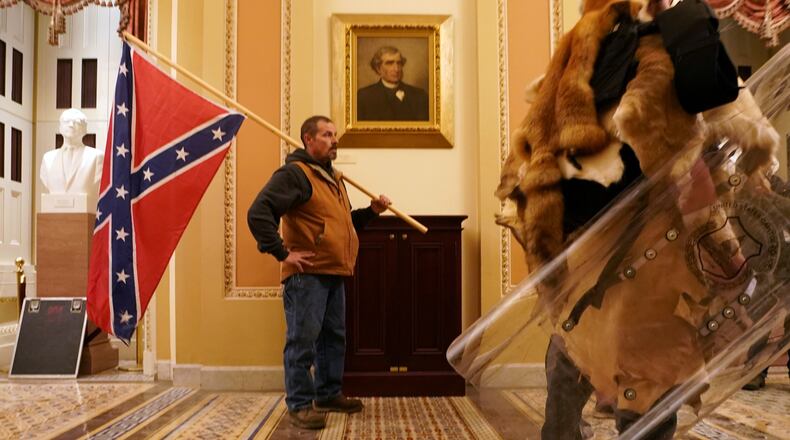Former teacher Charis Granger-Mbugua writes today in a guest column about trying to help her two young children understand the terrible events Wednesday in Washington, D.C.
A National Board Certified teacher and Spelman graduate, Granger-Mbugua attended school in Cobb, where her own son is now a student. She has written several pieces for the Get Schooled blog including this one last month. You can also read earlier essays by Granger-Mbugua here and here.
By Charis Granger-Mbugua
My 6-year-old son and 4-year-old daughter watched much of what happened Wednesday at the U.S. Capitol—more than they probably should have.
Though they both understood, in their own child-like ways, the significance of the election outcomes in Georgia, they could not understand the events that were playing out on our living room TV. While we wanted to celebrate the historical victory of the Rev. Raphael Warnock and the amazing symbolism of Jon Ossoff’s unseating of Sen. David Perdue, we could not, but for a few fleeing moments, before our attentions were turned to something much more sinister.
And my heart is weary because I don’t know what else to say to them. I can barely make sense of it for myself.
Help me explain this image, of a noose hanging in front of the Capitol building, to my son Micah and my daughter Naomi. What do I say when my son asks why? What do I tell my daughter when she asks what it means? These are not rhetorical questions. This is a Black mother to two young Black children sincerely asking for help.
My son is old enough now to begin to feel the sting of rejection and to recognize the weight of his skin color. Although he is only in first grade, he is sharp enough to sense the tension in the air as the news pours into our home. He listened, with childish naiveté, as the sitting president emboldened his supporters with his words. He watched, with desperate curiosity as windows were smashed and walls were scaled, in the name of patriotism and pride. He heard enough of his father and my whispered conversations about systemic racism, and police brutality, and voter suppression, and our thirst for justice, to know something big was happening in our world that day.
And my daughter, well she asked me to explain the Ku Klux Klan to her. She’s 4. Four. The picture of that noose is a symbol of a history that is dangerous, and dark, and diabolical and I do not feel ready to begin revealing these ugly truths to her. Yet, there, in front of her own eyes, were the images on the evening news.
I marvel at the comments on social media, by friends and friends of friends who say, “well…both sides are at fault,” or “This has nothing to do with privilege.” These are people who I grew up with, shop at Target with, sit at the park with.
But what hurts the most is the deafening silence. Silence from those who never have to explain to their own children the significance of a noose hanging in front of the Capitol. Silence from those I have considered friends. Silence from school districts and elected officials who have a platform to speak out and speak up.
That silence that must be broken. As a former classroom teacher, I appreciate the magnitude of the conversations that need to happen in classrooms across the country today, tomorrow, next week, next month and beyond. Our children need to hear that although what we witnessed in Washington — the inequitable treatment of white men and women as compared to brown, black, and indigenous people — is as American as apple pie, it is not who we must endeavor to be. America can and should be so much more.
I am so grateful for the teachers I know, teachers whom I call personal friends, who gave students a space to share, and to question, and to criticize today. I urge school districts to use this opportunity to publicly and vehemently speak out against what was displayed at the Capitol.
This is the time to make education real.
Our schools must be a safe place for students and staff alike to examine the inequities, challenge the status quo, and acknowledge the stark differences between the treatment of those who protested over the summer and of those who stormed the U.S. Capitol yesterday.
My son and daughter, as young as they both are, need to hear from voices beyond those closest to them that America is committed to being better, that white supremacy and domestic terrorism is denounced in their country, and that we are all dedicated to the preservation of democracy and an fairer and more just America.
About the Author
The Latest
Featured



